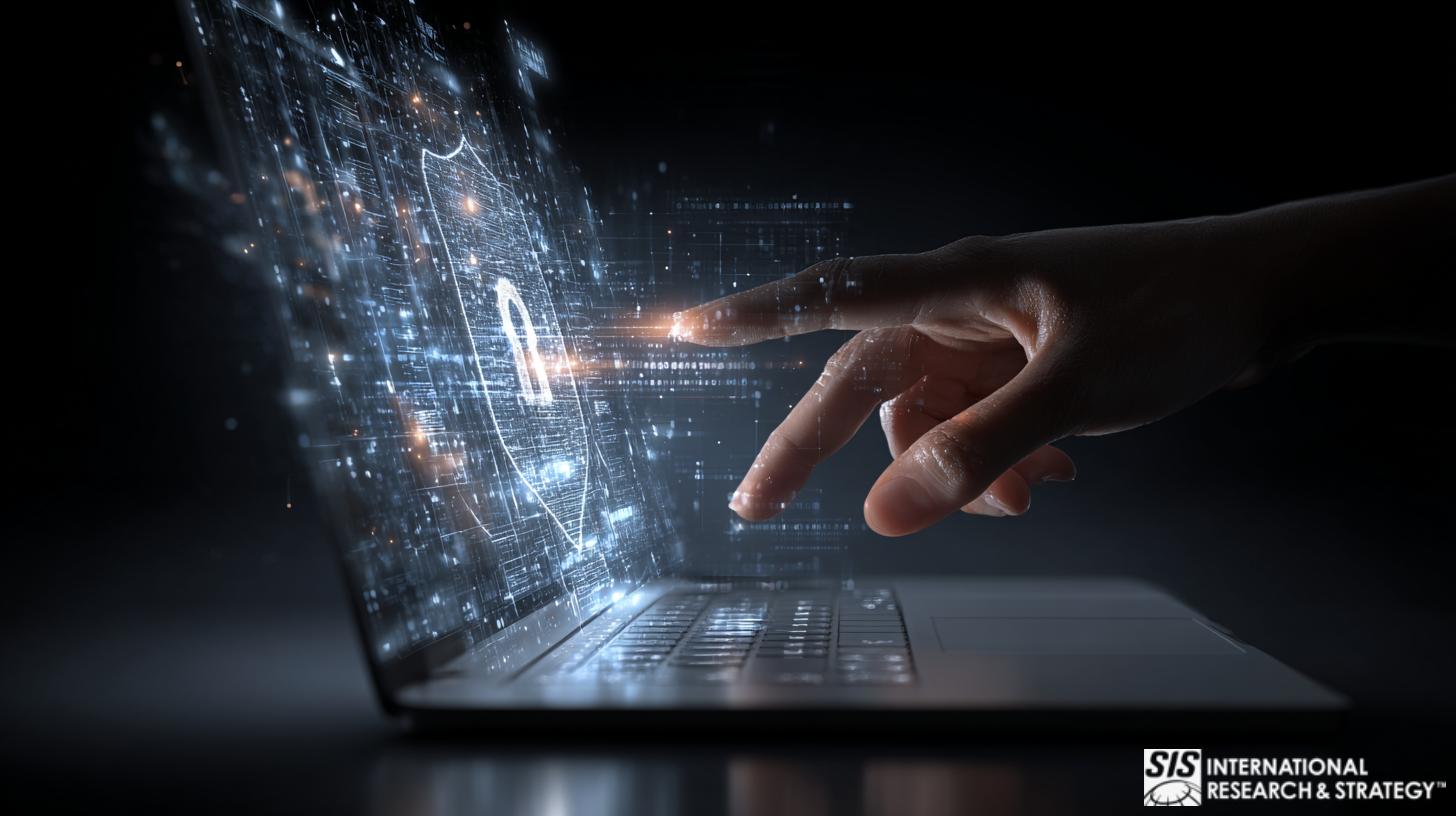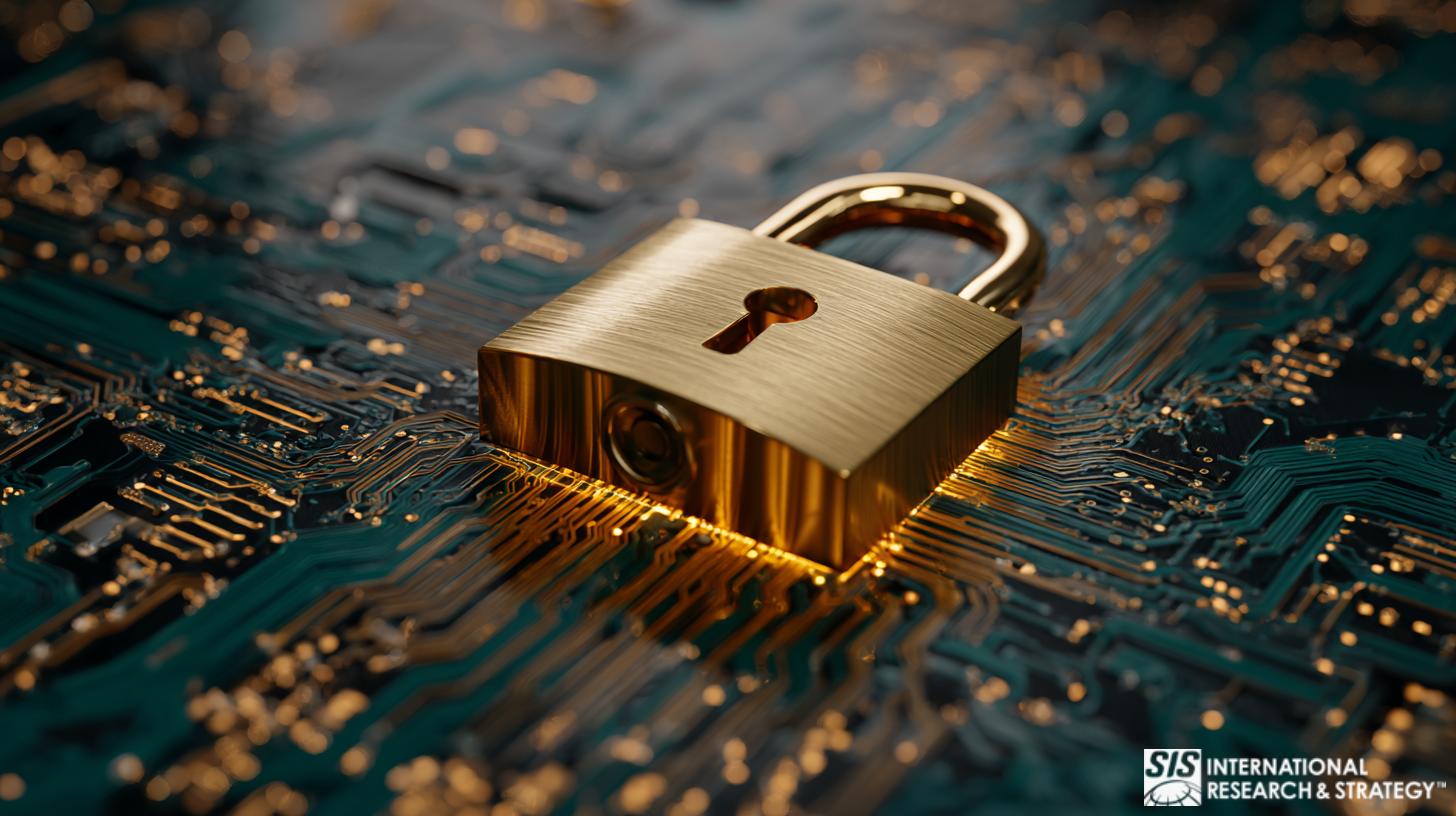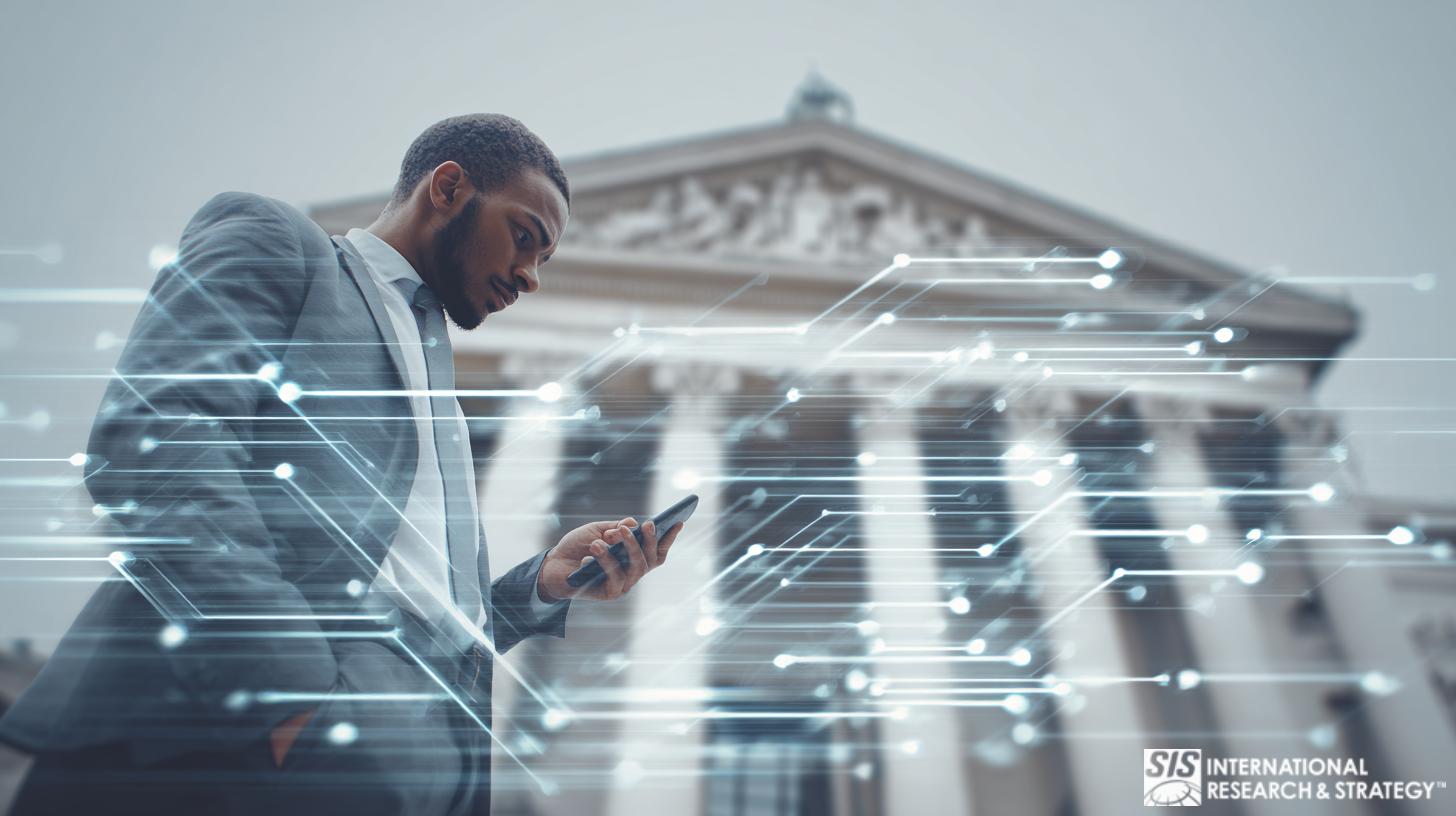
Een heel ander virus
Een kort overzicht van de voortdurende strijd om het tij van cyberaanvallen in de gezondheidszorg te keren.
In addition to subversive hacking in the business world, where private information can be compromised and sensitive company data absconded with, cybersecurity measures are now employed to negate the effects of hacking by foreign entities, used a political weapon. It is an increasingly serious global problem, and one that has necessitated the implementation of advanced cybersecurity methodologies to counteract the increasingly sophisticated capabilities of hackers to subvert these very systems.
“In recent years, cybersecurity has been a growing concern in healthcare, with high-profile cyber-attacks and vulnerabilities causing disruptions for insurers, hospitals, and medical device makers. The stakes for patients are high too as patient data could be lost or tampered with, hospital services interrupted, or patients harmed through attacks targeting specific devices … “ 1
Overheidsinterventie om cybercriminaliteit te bestrijden
The rapid digitization of the healthcare industry makes this sector particularly vulnerable to cyber attack, and this fact has not been lost on the US Congress. The House Energy and Commerce Committee recently convened to address cybersecurity in the health sector. Information Sharing and Analysis Centers (ISACS) may be key in providing enhanced security for healthcare providers and in thwarting efforts of would-be cyber attackers.
Through the interactive efforts of the 24 organizations that comprise the National Council of ISACs (NCI), great efforts are being made to “maximize information flow across the private sector critical infrastructures and with government. Critical infrastructure sectors and subsectors that do not have ISACs are invited to contact the NCI to learn how they can participate in NCI activities.”2
It is, of course, a Herculean undertaking to strengthen the partnership between public and private entities in healthcare with regard to cybersecurity, considering the myriad industries and agencies of government that are responsible for regulating and delivering said healthcare. Congress has been encouraged to provide tax breaks and other incentives to prompt companies to get involved with the ongoing effort of ISACs.
Slechte participatie belemmert implementatie van cyberbeveiliging
Unfortunately, poor participation rates among healthcare facilities have been a persistent problem in the ongoing efforts to implement effective cybersecurity measures across the sector. According to Terry Rice, vice president of IT risk management and chief information security officer at Merck, “companies may be hesitant to share information within an ISAC if they fear the information will not remain confidential to its members.”3
“I think the most shocking statistic was really the fact that 40% of the individuals at the top of an organization–executives like CEOs and CIOs, and even board members–didn’t feel personally responsible for cybersecurity or protecting the customer data.” Dave Damato, Chief Security Officer at Tanium, on CNBC’s Squawk Box, sprekend over cybersecurity in de gezondheidszorgsector 13
De hoge kosten van cybercriminaliteit in de gezondheidszorg

Aside from the obvious threat of compromised patient information and other incidents of data theft, failures of cybersecurity are incredibly expensive, to the tune of $6.2 billion annually, according to a 2016 research project conducted by the Poneman Institute. Insights revealed in their studies revealed that “nearly 90 percent of the healthcare organizations … had endured a data breach during the previous two years. Forty-five percent had more than five data breaches in that period, with the average cost of a cyber attack totaling $2.2 million. The data contained in electronic health records (EHRs) is often cited as the reason healthcare is such an attractive target in the eyes of a hacker.”4
As secure as people like to believe their health information is in the possession of their doctor’s office or hospital, it is often not the case. The ongoing digitization of health records has been an expensive proposition for the healthcare industry. Securing all that information is another monumental expense, and sometimes this part of the cybersecurity equation has been neglected in the interest of cost-savings, or just by the large-scale nature of the overall endeavor.
De lucratieve aard van cyberdiefstal in de gezondheidszorg
Of course, health records are a hot commodity on the black market, and they can fetch top dollar from parties seeking to obtain personal information, billing addresses, and credit card numbers. Hacking can be a very lucrative enterprise, indeed. Consider this example. “Hackers made off with more than 2.2 million patient records from Fort Myers, Florida-based 21st Century Oncology in March of 2016. A month later, someone stole a laptop with 205,748 unsecured patient records on it from Premier Healthcare, LLC.” 5
De komst van ransomware
Ransomware is een nieuwe term voor de meeste mensen, die bekend zijn met de recente WannaCry-aanvallen die wereldwijd zijn ontketend, die kritieke infrastructuursystemen lamleggen en aanzienlijke financiële losgelden opeisen van degenen die ten prooi vielen aan de angst en het potentiële verlies van gegevens die kenmerkend zijn voor dergelijke aanvallen. Vooral de gezondheidszorg is kwetsbaar voor ransomware-aanvallen.
“Ziekenhuizen zijn het perfecte doelwit voor dit soort afpersing, omdat ze kritieke zorg bieden en vertrouwen op up-to-date informatie uit patiëntendossiers. Zonder snelle toegang tot medicijngeschiedenissen, operatierichtlijnen en andere informatie kan de patiëntenzorg worden vertraagd of stopgezet, waardoor ziekenhuizen eerder geneigd zijn losgeld te betalen dan het risico te lopen op vertragingen die kunnen leiden tot overlijden en rechtszaken.” 6
Ransomware malware, in effect, locks up a computer and makes data inaccessible unless a ransom is paid to the perpetrator. Usually, this payment is made in the form of Bitcoin. In most instances, a time limit is established for the ransom to be paid, otherwise the computers data will be destroyed. Though most stricken parties don’t pay the ransom, enough do to make it a particularly lucrative criminal enterprise.
The healthcare industry has been vulnerable to ransomware attacks because, surprisingly, many hospitals have taken inadequate steps to prevent cybersecurity breeches. Instead, most hospitals have focused their primary concern on meeting HIPAA compliance and meeting federal guidelines to ensure the security of patient information. Ultimately, most employees in healthcare are simply not trained well enough to recognize and thwart cyber attacks before they occur. Even when adequate training and cybersecurity measures are in place, it is a continuous challenge to outwit perpetrators who constantly remain one step ahead of the game.
IoT-apparaten lopen ook risico
To add a layer of seriousness to the present situation, cyber attacks can affect not only computers, but devices that are connected to them, as well. Medical tools, heart and glucose monitors are but a few examples of devices vulnerable to cyber attack. Vice-President Dick Cheney famously demanded that his pacemaker be made safe from cyber attack, lest those with ill-intent not manipulate the function of his device remotely. Quite frankly, interference with such devices can be deadly for the patients who depend on them to live.
Als voorbeeld van medisch hacken: "In een momenteel gebruikte exploit, bekend als MedJack, injecteren aanvallers malware in medische apparaten om zich vervolgens over een netwerk te verspreiden. De medische gegevens die bij dit soort aanvallen worden ontdekt, kunnen worden gebruikt voor belastingfraude of identiteitsdiefstal en kunnen zelfs worden gebruikt om actieve medicijnvoorschriften te volgen, waardoor hackers online medicijnen kunnen bestellen om ze vervolgens op het dark web te verkopen." 7
“No patients have, as far as I know, been killed due to a hacked pacemaker, but patients have been killed due to malfunction[s] of their medical devices, configuration errors, and software bugs. This means that security research in the form of pre-emptive hacking, followed by coordinated vulnerability disclosure and vendor fixes, can help save human lives.” Marie Moe, beveiligingsonderzoeker bij SINTEF, in “Ga je gang, hackers. Breek mijn hart” (Wired)13
De FCC heeft nu voorgesteld dat IoT-leveranciers van medische apparaten beveiligingsmaatregelen inbouwen in de producten die ze produceren; het sleutelwoord dat daar wordt gesuggereerd. Het daadwerkelijk opleggen van verplichte beveiligingspraktijken en -vereisten voor die fabrikanten is een tijdrovende klus. Bovendien hebben netwerken die zijn toegewezen om gegevens tussen apparaten en databases door te geven ook een kritieke behoefte aan implementatie en monitoring van cyberbeveiliging.
Een nieuwe president, een nieuwe orde
There was much speculation as to how the Trump administration would address issues of cybersecurity. On May 11, 2017, the president signed an executive order that mandated a review of the nation’s overall abilities to combat criminal cyber-activity. The order places the brunt of responsibility concerning cybersecurity on federal agencies which were to do risk assessments and turn in their respective reports within 90 days. Additional reports examining critical infrastructure risks were due six months after the president’s order was issued.
“De order vraagt om een herziening van de dreiging die botnets vormen, die websites targeten met automatisch gegenereerd spamverkeer. Mirai-botnet was vorig jaar verantwoordelijk voor aanzienlijke internetstoringen. Maar Access Now zegt dat de order ook het proces van de overheid voor het bekendmaken van kwetsbaarheden en de reactie op datalekken moet aanpakken.”
There is no overall preventative measure or measure that can eliminate the risk of cyber attacks. Rather, hospitals, clinics, and private practices can only hope to work together and manage the continuous risks in the interest of protecting the private information and the general safety of their patients. Concurrently, continuous technological advancements will hopefully address the vulnerability of medical devices and computer networks.
Deze poging om de potentieel rampzalige effecten van cybercriminaliteit in de gezondheidszorg en daarbuiten in te dammen, reikt veel verder dan de Verenigde Staten. Er is momenteel een wereldwijde poging gaande om het tij van cyberaanvallen wereldwijd te keren, of om op zijn minst de impact te minimaliseren van wat een eindeloze poging lijkt namens cybercriminelen om gezondheidszorgsystemen te infiltreren en waar mogelijk chaos te veroorzaken en af te persen, met welke duistere doeleinden dan ook.
Politieke motieven voor cyberaanvallen

With the hostile political climate that exists between North Korea and virtually every other country in the civilized world, it is not surprising that the rogue nation has been cited as a probably offender in the recent WannaCry ransomware attacks, and other ill-willed endeavors undertaken for political reasons and for the purposes of financial extortion.
“Onderzoekers op het gebied van cyberveiligheid hebben technische aanwijzingen gevonden die Noord-Korea in verband kunnen brengen met de wereldwijde WannaCry “ransomware” cyberaanval die … meer dan 300.000 machines in 150 landen geïnfecteerd. Symantec and Kaspersky Lab said … some code in an earlier version of de WannaCry-software was ook verschenen in programma's die werden gebruikt door de Lazarus Group, die door onderzoekers van veel bedrijven zijn geïdentificeerd als een door Noord-Korea gerunde hackoperatie.” 10
Niet alle experts geloven dat de WannaCry-ransomwareaanval werd gemotiveerd door financiële redenen. Sommigen, zoals Matthew Hickey van de Britse cyberconsultants Hacker House, geloven dat de daders simpelweg hoopten "zoveel mogelijk schade te veroorzaken." Dit was zeker het geval in de landen die het zwaarst werden getroffen door de aanval, waaronder India, Taiwan, Oekraïne en Rusland.
Sommigen, zoals de Russische leider Vladimir Poetin, gaven de NSA de schuld van wat hij beweerde dat hun rol was in de WannaCry-ransomware-aanvallen. WannaCry-technologie zou zijn "gebaseerd op een gelekte tool die misbruik maakt van een beveiligingslek in Windows dat afkomstig lijkt te zijn van de NSA. "We zijn ons er volledig van bewust dat de geesten, in het bijzonder die gecreëerd door geheime diensten, hun eigen auteurs en makers schade kunnen toebrengen, als ze uit de fles worden gelaten," zei Poetin in Beijing, volgens de Russische staatsnieuwsdienst Tass.” 11
“This next president is going to inherit the most sophisticated and persistent cyber espionage cultures the world has ever seen, He needs to surround himself with experts that can expedite the allocation of potent layers of next-generation defenses around our targeted critical infrastructure silos.” James Scott, Senior Fellow, Institute for Critical Infrastructure Technology 14
Trends in de strijd tegen cyberaanvallen in de gezondheidszorg
Obviously, the threat of cybersecurity breaches across all sectors of business and industry will not abate. In healthcare, there will be an ongoing and incessant need to improve technology and overall vigilance to avoid disastrous incidents in the future. Certain protective trends are emerging that might be seen as the future of cybercrime deterrence in healthcare.
At the top of the list is an increasing migration to cloud-based information security tools. This move “will allow the tools to be updated more dynamically to address zero-day type malware. This move to the cloud should ultimately make it more economical to make these tools available to all healthcare providers – large and small.” 12
In addition, the healthcare industry will be forced to encourage increased information sharing and collaboration across health networks and between facilities. This mutual cybersecurity effort will be difficult to instigate as health institutions are often quite insular by nature. It is predicted that this sharing of information will reach beyond healthcare to include many sectors of business and institutional endeavors to minimize risks for all involved.
Ultimately, the effort to negate the dangers of cybersecurity breaches, ransomware, and new and emerging threats in this arena will come down to education and awareness on all employee levels in healthcare and beyond. When everyone is well-educated and made to see warning signs of cyber-risks and what they can do to be part of an overarching effort to stem the tide of cyber-incursion, the healthcare industry and all protectors of civilized information sharing around the globe will continue to make meaningful strides towards limiting the damaging effects of cybercrime in all sectors.
AI-Driven Website Security: WP Safe Zone for Healthcare
In the healthcare sector, where sensitive patient data is a prime target for cyberattacks, robust website security is critical. The rise of AI in cybersecurity is providing powerful solutions to combat these threats. One standout example is the WP Safe Zone plugin, tailored for WordPress websites.
WP Safe Zone utilizes artificial intelligence to protect websites from malware, brute force attacks, and unauthorized access. Its AI algorithms constantly monitor and adapt to emerging threats, ensuring real-time protection for healthcare organizations’ online platforms.
As cyber risks in healthcare continue to grow, tools like WP Safe Zone demonstrate how AI can safeguard critical systems, ensuring both data security and compliance with strict regulations.
Wij kunnen u helpen bij uw cyberbeveiligingsinspanningen
SIS International Research heeft decennialang op veel niveaus samengewerkt met de gezondheidszorgsector, van zelfstandige huisartspraktijken tot gelaagde en monolithische gezondheidsnetwerken. Ons unieke begrip van de uitdagingen waarmee bedrijven en instellingen in de gezondheidszorgsector worden geconfronteerd, is ongeëvenaard. Wij bieden onderzoek en informatie over belanghebbenden[/fusion_text][fusion_text]
Onze oplossingen omvatten:
Vandaag de dag, met de extra complexiteit van de dreiging die wordt veroorzaakt door toenemende cybercriminaliteit gericht op onze meest gerespecteerde zorginstellingen en de patiënten die zij bedienen, beschouwen wij onze rol met de hoogste mate van ernst. Als een bedrijf dat er trots op is het belang en de veelzijdige aard van de gezondheidszorgsector te begrijpen, zullen wij gezondheidsgerelateerde praktijken, faciliteiten en organisaties blijven bedienen met dezelfde hoogwaardige en uitgebreide onderzoeksmogelijkheden die onze klanten zijn gaan verwachten en eisen. Op deze manier hopen wij ons steentje bij te dragen aan het helpen van de medische gemeenschap om de zeer reële en ernstige dreiging van cyberaanvallen in de gezondheidszorgsector te begrijpen en te bestrijden.
Bij het samenstellen van dit onderzoek zijn de volgende bronnen gebruikt:
http://www.raps.org/Regulatory-Focus/News/2017/04/04/27267/Cybersecurity-House-Committee-Looks-to-Build-on-Public-Private-Partnerships/#sthash.x4Xvdf6q.dpuf
https://www.nationalisacs.org/
http://www.raps.org/Regulatory-Focus/News/2017/04/04/27267/Cybersecurity-House-Committee-Looks-to-Build-on-Public-Private-Partnerships/#sthash.x4Xvdf6q.dpuf
https://learningnetwork.cisco.com/blogs/talking-tech-with-cisco/2017/03/21/cybersecurity-and-healthcare-a-forecast-for-2017
https://learningnetwork.cisco.com/blogs/talking-tech-with-cisco/2017/03/21/cybersecurity-and-healthcare-a-forecast-for-2017
https://www.wired.com/2016/03/ransomware-why-hospitals-are-the-perfect-targets/
https://www.wired.com/2017/03/medical-devices-next-security-nightmare/
https://techcrunch.com/2017/05/11/trump-signs-long-delayed-executive-order-on-cybersecurity/
http://www.healthcareitnews.com/news/top-10-cybersecurity-must-haves-2017
http://www.dingit.tv/highlight/1441974?utm_source=Embedded&utm_medium=Embedded&utm_campaign=Embedded
www.healthcareitnews.com/blog/3-trends-shaping-future-cybersecurity
https://www.forbes.com/sites/danmunro/2016/12/18/top-ten-healthcare-quotes-for-2016/#5f47fb6b127f
http://www.goodreads.com/quotes/tag/cyber-security



